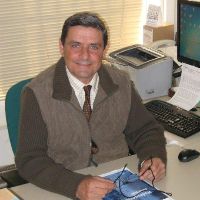Study on Solid Waste Characterization and Control, and Pollutant Transport Dynamics
A special issue of Processes (ISSN 2227-9717). This special issue belongs to the section "Environmental and Green Processes".
Deadline for manuscript submissions: 31 July 2024 | Viewed by 1576
Special Issue Editors
Interests: electrical and electromagnetic prospecting methods; well logging; petrophysics; geotechnics; water resources; environmental geophysics; near-surface geophysics
Interests: water pollution; modelling of polluting processes; statistics and fuzzy logic; mining and environment; acid mine drainage; applied geophysics
Interests: geophysics; geochemistry; petrophysics; pollution; contamination; environment; signal and data processing
Interests: electrical resistance tomography; near-surface geophysics; hydrogeophysics; petrophysics; electromagnetic prospecting methods; geomechanics; environmental geophysics
Special Issue Information
Dear Colleagues,
The current problems due to environmental phenomena associated with the generation of solid waste, which encompass a myriad of origins such as agriculture, industry, domestic, construction, electronic waste, and many more, require multidisciplinary solutions. Understanding and knowledge of the transport mechanisms between different environmental factors are key aspects in order to minimize their scope and remediate their effects, through proper characterization and control. The presence of water is an important factor in the physical, chemical, and biological phenomena that trigger contaminating processes in the subsoil, and in the transport of these pollutants, whether through groundwater, runoff water, or river channels, often ending up in the seas and oceans. This diversity implies added difficulty in the study of pollutant mobility, compounded by the heterogeneous nature of the pollutants themselves.
This Special Issue is dedicated to the publication of the latest advances in characterization and control methods, as well as in mathematical tools for modeling and analyzing the transport processes of solid waste in different media. The topics include, among others, the following:
- Development of methods for controlling contaminating processes;
- Application of geophysical and geochemical prospecting methods for the characterization of contaminated media;
- Development of analytical methods for the study of transport phenomena;
- Monitoring of contaminating processes;
- Analysis of the influence of petrophysical properties in the transport of pollutants;
- Modeling of transport and dispersion phenomena;
- Analysis of physicochemical processes in different environmental compartments;
- Dynamics of transport between different media;
- Application of new technologies in the characterization and control of pollution.
The aim is to group the most significant results, accommodating the various lines of research developed by researchers in the international community, to provide an overall view that fosters new lines of work and synergies. We are therefore pleased to invite you to contribute to this Special Issue with original research and review articles.
Prof. Dr. Jesus Diaz-Curiel
Prof. Dr. Jose Antonio Grande
Guest Editors
Dr. Lucía Arévalo-Lomas
Dr. Bárbara Biosca
Guest Editor Assistants
Manuscript Submission Information
Manuscripts should be submitted online at www.mdpi.com by registering and logging in to this website. Once you are registered, click here to go to the submission form. Manuscripts can be submitted until the deadline. All submissions that pass pre-check are peer-reviewed. Accepted papers will be published continuously in the journal (as soon as accepted) and will be listed together on the special issue website. Research articles, review articles as well as short communications are invited. For planned papers, a title and short abstract (about 100 words) can be sent to the Editorial Office for announcement on this website.
Submitted manuscripts should not have been published previously, nor be under consideration for publication elsewhere (except conference proceedings papers). All manuscripts are thoroughly refereed through a single-blind peer-review process. A guide for authors and other relevant information for submission of manuscripts is available on the Instructions for Authors page. Processes is an international peer-reviewed open access monthly journal published by MDPI.
Please visit the Instructions for Authors page before submitting a manuscript. The Article Processing Charge (APC) for publication in this open access journal is 2400 CHF (Swiss Francs). Submitted papers should be well formatted and use good English. Authors may use MDPI's English editing service prior to publication or during author revisions.
Keywords
- solid waste
- pollutant transport
- environmental modeling
- petrophysical properties
- geophysical prospecting
- geochemical prospecting
- physicochemical processes
- contaminant characterization
- surface water
- groundwater








